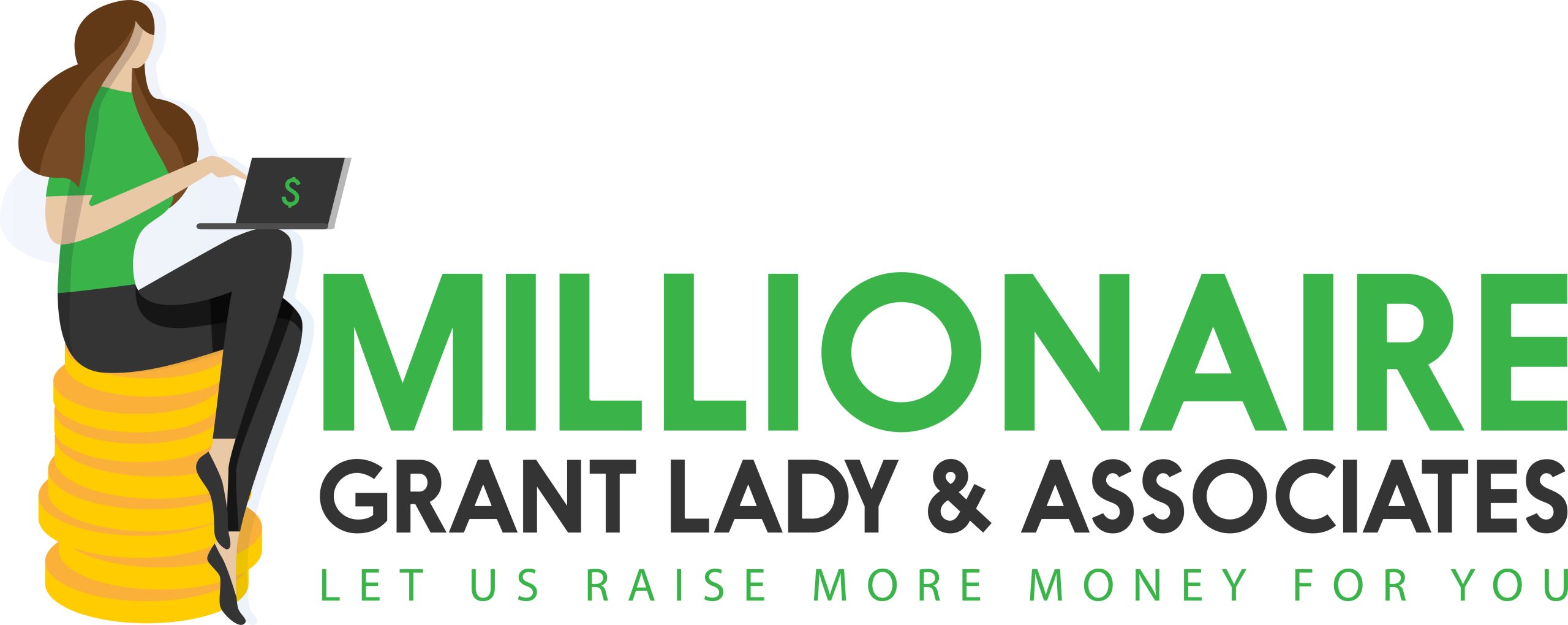Artificial intelligence (AI) has become the topic of the year, and many nonprofit leaders are wondering whether they can use it to simplify operations, save money, or even eliminate certain staff positions. One of the most common questions we hear from executive directors and development officers is: “Can AI replace our grant writer?”
It’s an understandable question. Grant writing can be time-intensive and complex. Deadlines are strict, funder requirements can be dense, and competition is fierce. At first glance, AI grant writing tools seem like a dream solution—it promises quick, polished writing and instant turnaround.
But nonprofits that try to rely on AI grant writing alone for grant proposals quickly discover its limits. While these tools can generate text, they lack the context, judgment, and ethical discernment that real grant professionals bring to the table. A grant isn’t just a document—it’s a persuasive, data-driven argument for why your organization deserves funding. And AI simply can’t make that argument authentically or strategically.
At Millionaire Grant Lady and Associates, we’ve seen firsthand what it takes to write winning grants. Our team has worked with hundreds of nonprofits across the country, helping organizations secure millions in funding for programs that strengthen communities and change lives.
Alex, the founder of Millionaire Grant Lady and Associates, has been a grant writer for more than a decade and has seen a lot of trends come and go. With all of the positive press about AI writing platforms, we had to see what all the fuss was about. After attending trainings in AI, reading articles and online courses about AI, and testing several platforms, we have identified some tasks where it may be appropriate and even beneficial to let a bot handle the task. However, for most tasks, a human still does a much better job.
Table of Contents
- How AI Writing Tools Work
- What AI Can Do Well in the Grant Writing Process
- Where AI Falls Short (and Why Humans Still Win)
- Ethical and Legal Concerns Nonprofits Must Know
- AI Is Everywhere—But the Results Are Mixed
- When and How to Use AI Responsibly in Grant Writing
- Human Grant Writers: The Real Advantage
- The Smart Path Forward: Blending Efficiency with Expertise
How AI Writing Tools Work
Before reading this article, I strongly recommend that you learn a little bit about how AI writing platforms work. You can check out my article on this topic here.
AI stands for artificial intelligence. It is artificial intelligence because the writing only appears to be created by a being who understands. AI does not actually understand the writing that it creates. It creates writing much like the predictive text feature on your phone. It scans what you have written and guesses at the next word that you want. Sometimes, these guesses are right, but many times, they lead to illogical or inaccurate messages. AI does not know and is not able to determine if what it is writing “makes sense.”
What AI Can Do Well in the Grant Writing Process
In my research, I have been testing AI to see if or how it can be used for grant writing. After working with several different platforms, here are the things I have seen AI be able to do really well.
Generate a lot of ideas very quickly
AI can be used to banish writer’s block, to an extent. For example, several weeks ago, I sat down to my computer pre-coffee and needed something to kick-start my brain. I typed into AI, tell me 10 common problems grant writers face. And boom, in a few seconds, the AI writing platform had formulated a list of 10 problems. This list didn’t turn into anything I submitted to anyone, but it did give me a jump on getting my brain going for the day.
Pro-tip: When asking ChatGPT to generate ideas, there is a sweet spot for how many ideas it can generate effectively. For me, 10 is about the max. If you ask it to generate 20 or 30, eventually AI grant writing tools run out of predictive sequences and repeat themselves.
Create an outline very quickly
If you already have an idea of what you want to write about but need help developing the ideas, ask AI to create an outline for you. Simply tell it, “I am a grant writer. Create an outline about [topic]. Include [add details].” In less than a few minutes, it will craft an outline that you can use to guide your own writing.
Pro-tip: The more specific you are, the better the output will be.
Create a headline, title, or social media post very quickly
If you already have a text you are working from and need to create a short piece of writing based on this longer text, you can copy and paste in the long text and ask AI to create headlines, titles, or social media posts for the text.
Summarize something (when the content of the summary isn’t all that important)
AI cannot understand the context for the writing it is creating. It writes based on its word prediction algorithm. This means that it doesn’t know the funder you are writing for, their priorities, your priorities, or what is happening in the world today. It is simply predicting which word should come next based on complex calculations.
But, if you have a large amount of content and you already know what’s important, you can ask AI to summarize the text. Then, you can augment the AI summary by adding back in the important details AI removed.
Pro-tip: Think of AI like a calculator. It is only as correct as what has been put into it. Always check what AI gives you, and make sure it fits with your organization’s goals, brand, and voice.
Where AI Falls Short (and Why Humans Still Win)
AI tools can generate text in seconds, but they don’t understand truth, context, or nuance. To learn more about how AI tools work, check out our blog post about that topic here.
In our team’s testing, we have found that AI struggles to understand or explain cause and effect, and AI faces extreme difficulties when asked to explain how events across time are related. For example, in our team’s recent test project, AI consistently talked about DEI initiatives being a priority for current government leadership, despite the exact opposite being true at the time of this writing. AI additionally cannot verify facts, interpret data, or understand the emotional weight behind your mission. That means every piece of AI-generated writing must be reviewed carefully to ensure accuracy and authenticity.
A human grant writer can read and comprehend what has been written. Humans can cognitively process what has been written and predict, based on their understanding of their organization’s goals and the funder’s goals, what needs to be written next. Because of this understanding, a human grant writer can craft a much more compelling grant application by explaining, in a compelling way, what the need for the program is, how the organization is meeting this need through the program, and how the program ties to the funder’s goals.
A well-crafted grant proposal will provide context for your program and its need. This context is part of what will allow you to earn more funding. A human grant writer can understand and incorporate this context. Without this context, your grant proposal will likely get put straight into the recycling bin.
AI uses predictive text. It scans the writing it has to create writing. At its worst, AI writing is inaccurate and perpetuates the inherent biases of the language it was trained on. At its best, AI produces average writing, which will not lead to a highly competitive grant proposal.
Ethical and Legal Concerns Nonprofits Must Know
The legal and ethical challenges around AI-generated content are not hypothetical—they’re happening now. For example, in New York (2023) and Utah (2025), lawyers were fined after submitting AI-generated briefs that included fabricated legal citations.
For nonprofits, the risks are just as serious. Some publications have warned that AI-generated materials could expose organizations to privacy violations or intellectual property claims. If an AI tool pulls from copyrighted text or inadvertently includes donor data, your organization could face legal liability. Currently, ethical questions about transparency, accountability, and fairness are at the center of the national conversation.
The lesson is clear: AI can be a useful tool, but it must be used carefully and responsibly, and never without human oversight.
AI Is Everywhere—But the Results Are Mixed
According to the Stanford University 2025 AI Index Report, around 78% of organizations use AI in some aspect of their work. From marketing to data analysis, AI tools are now embedded in daily operations—often for automating routine tasks or analyzing data.
However, adoption doesn’t always mean success. A 2025 MIT study found that 95% of generative AI pilot projects failed to produce measurable financial returns. In other words, most organizations are not seeing a reduction in costs from using these tools.
The reason? AI often shifts work rather than eliminating it. While it can draft content quickly, humans still need to review, correct, and refine the results. That means time and expertise are still required—and in areas like grant writing, where precision and compliance matter, that oversight becomes even more critical.
When and How to Use AI Responsibly in Grant Writing
AI excels at tasks that require speed and volume. When you need many ideas generated quickly to get you going, AI can do this well. When you want several social media posts from the same content, AI can do this, too.
A human should oversee all AI writing. At best, AI is a writing assistant. Even social media posts that AI has created for me need more touching up to be ready to go.
I would avoid using AI in grant writing anytime you need:
- Up-to-date information: AI chatbots do not have sufficient information about current events to write about our current world with specificity and accuracy.
- Specific writing about your organization: Even if you tell AI what is important about your organization, it cannot really understand what you mean.
- Creative solutions: AI uses predictive text to write based on predetermined patterns.
- Nuanced answers: AI cannot understand nuance and created three nearly identical answers.
- Longer pieces of writing: Since many grant proposals are 6 to 8 pages in length, generative AI is far from being able to achieve this.
- Writing you can put your name on: Much of the writing that I have created through AI just doesn’t feel right to me.
Human Grant Writers: The Real Advantage
A human grant writer, however, can use their creative and emotional intelligence to create a compelling grant proposal that ties to the funder’s goals. This creativity and originality will help bring your project to life, help you stand out from the crowd, and multiply more funding for your organization. This is what it takes to win grant dollars.
If your nonprofit is thinking about reducing costs by outsourcing or automating grant writing, the best solution isn’t AI—it’s a qualified grant consultant.
A professional consultant brings both expertise and perspective. They know how to identify grant opportunities that align with your mission, frame your data in a compelling way, and communicate your impact with authenticity. They also understand the unspoken rules of the grant world—what funders value, what language resonates, and how to avoid common mistakes that can derail an otherwise strong proposal.
The Smart Path Forward: Blending Efficiency with Expertise
At Millionaire Grant Lady, we combine deep experience in the nonprofit sector with a clear understanding of how AI-powered grant writing is changing the landscape. We use tools strategically—to improve efficiency, research funders, and track performance—but we never rely on AI to replace human insight or creative skill. Read this article to learn more about some of our big wins in the last year.
Our consultants know what funders are looking for, and we take the time to understand your mission, your outcomes, and your story. Every proposal we write is tailored, accurate, and persuasive, crafted by professionals who care as much about your success as you do.
If you’re considering how to balance innovation and integrity in your grant writing, we can help. Let’s talk about how to strengthen your funding strategy with expert guidance and human creativity.



